A Feline fine enough to knock your spots off
 Saturday, February 28, 2009 at 02:23PM
Saturday, February 28, 2009 at 02:23PM It's not every day you're lucky enough to see a leopard...but in the past week or so, it has been an almost daily occurrence here at Kulafumbi. Now that's a slight exaggeration, I admit, but we have been seeing a leopard opposite the house quite regularly. Over Christmas, we watched a leopard fishing in the rapids just above Hippo Bend, and since then we've seen a leopard several times (could be the same one, but who knows?) opposite the house on the far riverbank, and also moving in and out of the reed islands just below the house (even as late as mid morning when the sun is already high and hot). We often hear the baboons' and vervet monkeys' barking alarm calls in the early morning and at dusk, signifying the big cat's presence again, but often without us catching sight of it. And frequently below the house, we see other leopard tracks in the sand, including that of a small female passing by under the veil of darkness. And in the dead of night, we often hear the distinctive rasping leopard call, such a haunting sound of the African night, sometimes near and bone-rattling, sometimes distant and sonorous.
A week ago, Ian and I were walking along our sandbank in the evening when we heard rustling coming from the other side of the river. Lo and behold, there was the leopard again, this time rushing back and forth amongst the rocks and fallen brush near the river's edge. It was hunting for hyraxes, which we saw dashing hither and thither, hoping to evade the deadly strike of a sharp-clawed lightning paw. We stood there and watched it for a good twenty minutes before the leopard wondered on upstream and we made our way downstream and home before it got too dark.
Unfortunately, in my delight at seeing the leopard, I forgot to notice how dim the evening light was and neglected to change the ISO setting on my camera...so the photos I took are not great, but nonetheless I wanted to share the handsome creature with you, so here it is, its beauty only diminished by the forgetfulness of this photographer:
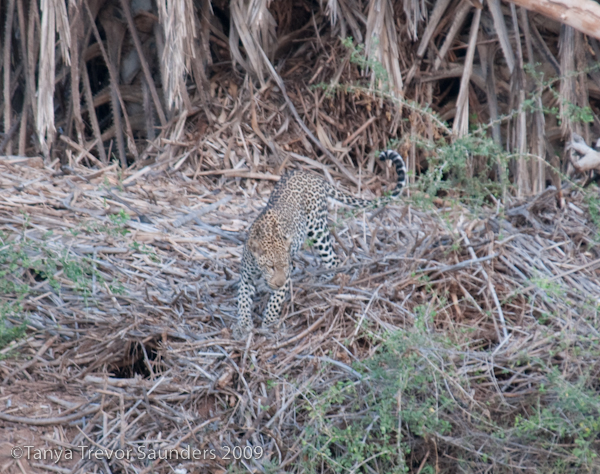
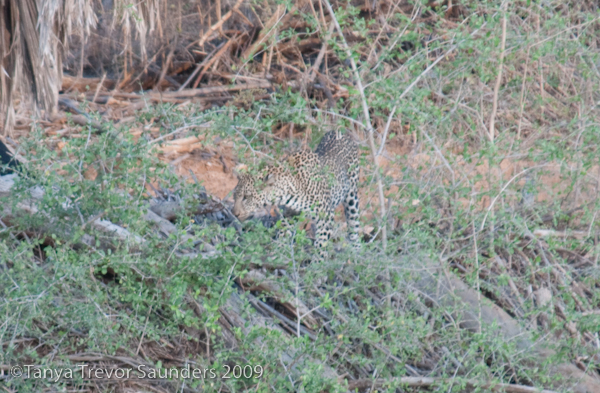
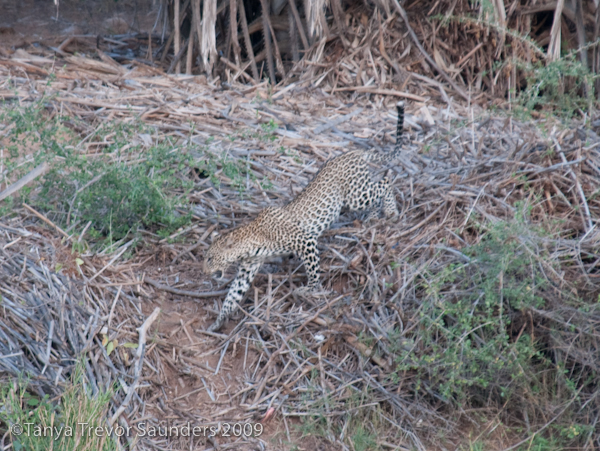
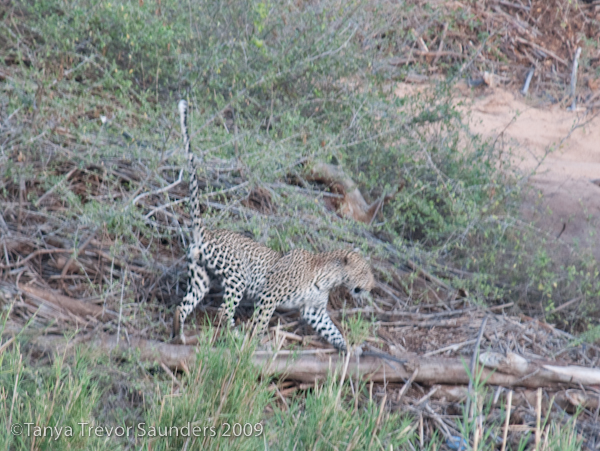
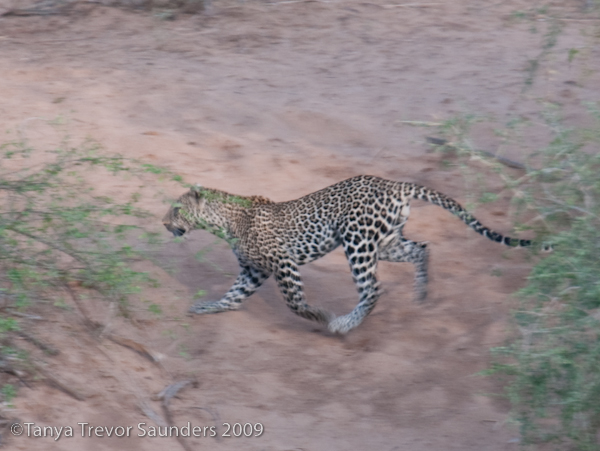
And to end on a cautionary note, let's not forget what happens to the hapless creatures caught by this most efficient of hunters: here are the only remains of a dikdik whose path crossed that of a hungry leopard. We picked this up on our driveway. As you can see, there's not much left to tell the tale, but quite enough to tell all that needs to be told!
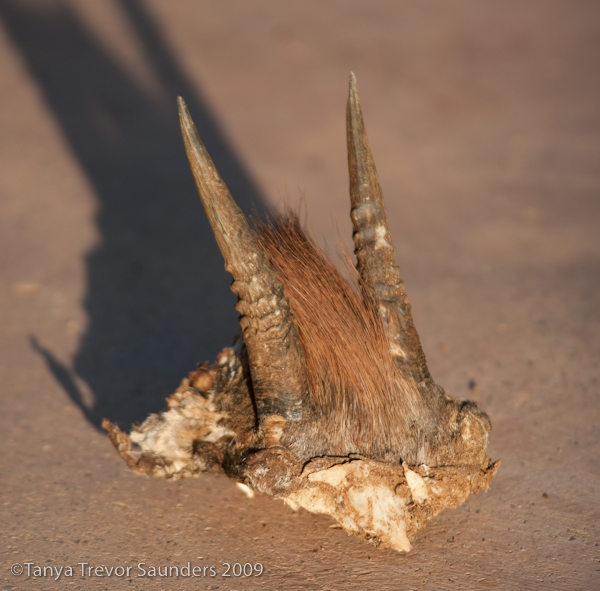





Reader Comments (3)
You lucky thing! I've only ever seen a leopard once - lying in a tree, paws dangling down looking as lazy as a summer's day.
What a shame about the ISO, in the excitement of the moment it is an easy thing to overlook, still they are great shots. I luckily saw leopards on this year's visit to the Mara. ISO on 1600 mostly as it was almost dark at the time!!!
Hey I invite you to visit India..India is rich of cheetah's and leopards..You can easily spot them in their natural habitat in sanctuaries and national parks of India..
Do reply.. :-)
shobin
Cash Online Get Easy cash at your door step